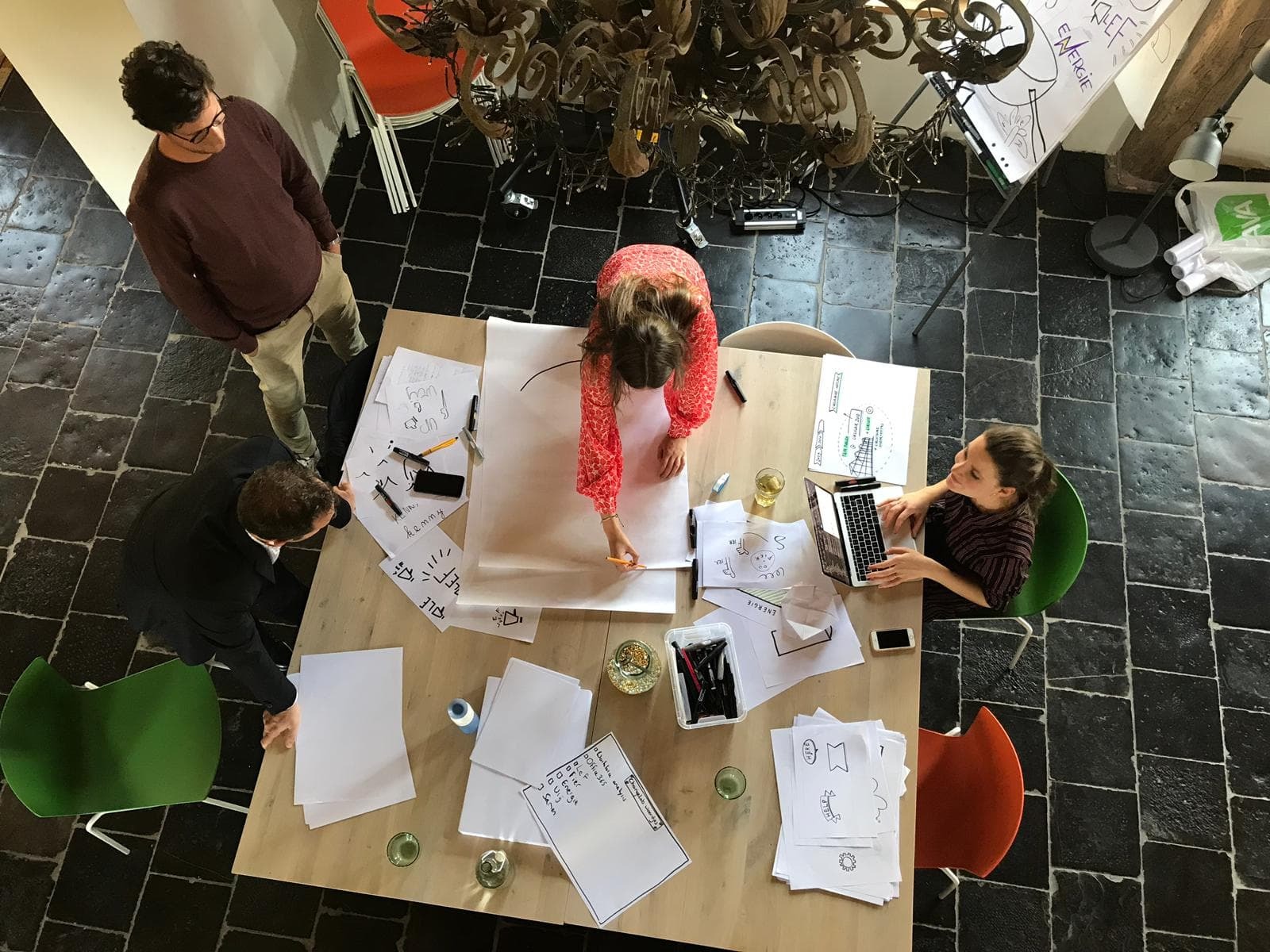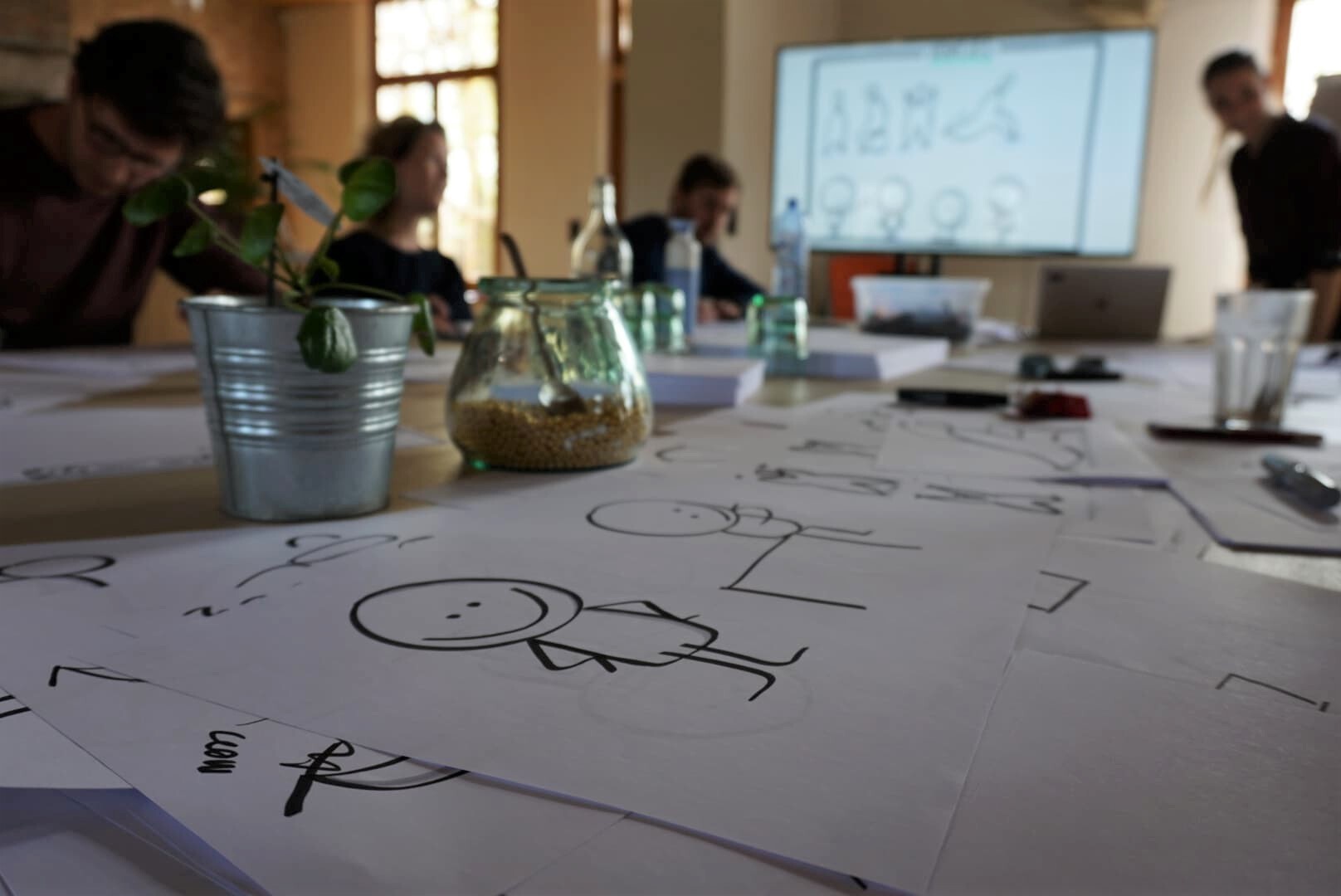There you are: at that point where you and the project team are all set to launch the new application you've been working on for a long time. You are breaking out of the cocoon of design, all ready to share your work with the world, filled with enthusiasm and pride! All the steps have been taken, and the roadmap for implementation is ready. And then you come to one of the most important milestones, if not the most important one: the moment you want to launch your product within the organization, because you know, without them it won't work!
You want to bring the entire organization into the new story you have to tell.
Because who are the best ambassadors? That’s right; the employees of an organization! Whether it is about changing the way of working, selling a new product, rolling out a new application, or any other internal change: if employees within an organization understand the why, the motivation for innovation, and see the benefits, you already made a very good start!
Involving employees in the "why", the underlying vision, requires a number of important rules of thumb that you need to include into your project plan from the start. In this blog post, Changelab, a specialist in change management, gladly lists them for you!
The bigger picture of the change
Always start with the bigger picture. Explain how this development responds to and contributes to the organization's objectives. Look for concrete examples in your organization that show how you are trying to meet the objectives. If you are launching a new product to contribute to customer satisfaction, provide examples of how you are already working on this today.
In this way, the launch is part of a bigger picture. This way, employees understand how all the different initiatives contribute to the mission of their organization.
Let the examples also come from the colleagues themselves. For example, what are they already doing to increase customer satisfaction? Provide testimonials from all over the organization. This leads to dissemination and concretization of the vision behind your new product.
Follow the leader
If you want to remember one thing from this article, let it be this. Building sponsorship during a change/renewal is crucial. It is not for nothing that we always talk about the 3 S's during change projects: sponsorship, sponsorship, and sponsorship.
We are not always talking about the financier behind the project, but about the influential colleague within the organization who must ensure that there is buy-in. Find out who’s the right person to make the first announcements about the new product or project. Who is that colleague in the organization who can announce the novelties in an inspiring way and carry weight within your target audience? In addition to this colleague - the main sponsor - you obviously need a wider network of sponsors. You can often find these in the management team.
Therefore, make sure you involve the entire management from the beginning of your project. Make the vision clear to them. Leave room for them to provide sufficient input. They, in return, can bring the message to the right colleagues in the organization. In this way you create dialogue: don't just let your vision disappear into the organization top-down.

During a Change Management project always remember communication is key
All the technical aspects are ready, the project team is on board - next invest sufficient time in drawing up a communication plan.
First of all, take care of branding: come up with a nice name and go for a creative visual for your new product. Look for things that are appealing to your target group.
Then draw up a concrete communication plan in which you specify when you want to send what message to certain target groups within the organization or to the organization as a whole. When drawing up this plan, take into account the ADKAR principles (source: PROSCI). The ADKAR model provides a basis for guiding employees through a change. ADKAR specifically stands for Awareness, Desire, Knowledge, Ability, and Reinforcement.
When we want to make sure that the vision behind a new product or a change is clear, we are in the first phase of the model: Awareness. Here everything revolves around awareness of the need for change. In the Desire phase, we want to make sure that colleagues are longing to be part of the innovation. The best way to get people to go along with a change is to point out the personal benefits for them ('What's in it for me'). Provide messages that make it very clear why something is being done and what the benefits are for specific employees. Think carefully about who those messages come from. The vision should come from the sponsor of the entire project, but the specific advantages and/or disadvantages for an employee should preferably be discussed by colleagues with their own manager.
Also, make use of different types of channels. That way you are addressing everyone. Move away from one-way communication through an extensive newsletter. Combine this channel with, for example, an interactive lunch meeting or create buzz by using fun teasers via posters, small messages, etc. Stimulate curiosity so that colleagues are encouraged to find out more about what is going on.
Let's keep talking about it
After the launch, focus on the experiences of colleagues. Let them share how they experience the new product and what they achieve with it in their daily activities.
You can also choose to invest in building an effective ambassador network. You look for colleagues in the organization that you involve in the change process from the beginning of the launch. They often know a little more about the new product and can therefore support their colleagues from their own department. This contributes greatly to the support for a change because they can explain very concretely to their colleagues around them how, for example, the new application benefits a specific task in their team.
In addition, these ambassadors capture feedback that helps you to further improve the project
Rome wasn't built in a day
Stay realistic. When an organization innovates, not everyone is on board right away. That is quite normal. Each person has his own pace in processing changes. Don’t be impatient and leave room for colleagues to go through the change process. Repeat sufficiently the why of the change and the benefits that it can bring to the employees themselves. Engage sufficiently in conversation so that you can make any adjustments based on valuable feedback from the business. Do not forget that there is a lot of interesting information among the colleagues who work with the new application every day. They are the basis to keep returning to.

Now how do you convert this change into practice?
One of our customers started to work on a new online application for their employees on the job. A nice tool was built so that the technicians could process everything more smoothly and in real-time. An improvement that, according to the management, would contribute to better customer service but also, and certainly equally important, to greater employee satisfaction. Over and out with pen and paper and a lot of administration. For the customer, this was a no-brainer: a nice, positive story, they thought. But the employees on the job experienced this completely differently! From the moment the rumors about this application started to circulate, there were great concerns. Colleagues saw this as a way for management to exert more control - driven by a lack of trust.
However, by responding well to the vision behind the new application, listening to the different concerns, informing colleagues in the right way, and continuously creating a dialogue between the different stakeholders, the implementation of the application went smoother than expected and the tool was used effectively. A win-win for everyone where the bigger story behind the application proved to be of crucial importance to get the colleagues on board with the change.
A few tips for your own change management project to wrap it up
If you are a project team ready to take the step to launch, always keep the following tips in mind:
- Outline the big picture
- Find the right people to tell the story with
- Build a solid communication plan
- Share experiences from within the organization
- Repeat the message and adjust if necessary
With these 5 rules of thumb at hand, your enthusiasm will easily spread through the organization.


